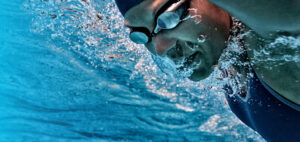Know more how personalized insoles and plantar orthoses helped 18-yr-old football player recover from Fifth Metatarsal Fracture
It’s hard to predict how injuries of various kinds can affect an athlete’s career. If one day a football player is riding high with a team destined for a playoff run, the next day he might be shattered by injuries. To a player’s nightmare, a fifth metatarsal fracture can even cut short his career. But, there’s also a road leading to recovery. And, the good news is that the recovery process can be further enhanced using external support devices in the form of shoe insoles and other products. That’s what experts at Podoactiva—a Spanish company offering podiatry services—believe. Here’s all about a fifth metatarsal fracture and how to decrease recovery time for the same:

Fifth Metatarsal Fracture & its types
It is a common injury in which the bone connecting the ankle to the little toe breaks. It is often found that these fractures occur from injury, overuse or high arches. The fifth metatarsal is the long bone on the outer side of the foot. It connects to the little toe. There are three types of fifth metatarsal fractures— Zone 1 (avulsion fracture), Zone 2 (Jones fracture) and Zone 3 (mid-shaft fracture or dancer’s fracture). In case of avulsion fracture, a small piece of bone is pulled off from the main portion of the bone by a tendon or ligament. Jones fracture usually occurs in a small area of the fifth metatarsal. This area receives less blood supply. Therefore, it is difficult to heal.
The Midshaft fractures usually result from trauma or twisting. They occur at the metatarsal head and neck. These breaks are mainly caused due to trauma to the foot. It can be caused due to a blow to the foot, high arches, repetitive overuse, rolling of the ankle and foot inward or twisting of the foot (in case of sports injury.) Some of the common symptoms include bruising, pain or discomfort, swelling and tenderness.

Treatment
Treatments for fifth metatarsal fractures include immobilization and surgery. Experts believe that if the bones are in place or aligned then immobilization can be suggested. They also claim that this is the usual option for treatment of zone 1 (avulsion). In case of zone 2 (Jones) fractures, immobilization can be considered as a first step of treatment. During immobilization, the foot has to be stabilized in a cast, boot or stiff-soled shoe till the injury heals. But if the bones are displaced more than 3 mm, surgical interventions are required. Surgery is recommended for zone 2 (Jones) fractures when nonsurgical treatment doesn’t work. It is also often suggested for zone 3 fractures.

Recovery using Plantar orthoses & insoles: A case study
According to experts at Podoactiva, the use of plantar orthoses showed positive results during a biomechanical study. The orthoses reduced the perception of pain on the Visual Analogue Scale from 9/10 to 1/10. At the same time, a reduction of plantar pressure at the location of the lesion was observed. This allowed a rapid return to play. As part of the study conducted, an 18-year-old player—who had suffered a fracture of the fifth metatarsal bone of the left foot during a match—was made to use three plantar orthoses with different prescriptions for everyday shoes, running shoes, and football boots. These were designed and fabricated by subjecting the virtual 3D profile of the orthoses to the baropodometric loads of the patient using the Finite Element Method (FEM) calculation. (FEM is a mathematical model in the use of calculations, models and simulations to predict and understand how an object might behave under various physical conditions. Engineers use FEM to find characteristic and vulnerabilities in their design prototypes.)
The player was suffering from Jones fractures. For the treatment during the first two weeks, the foot was completely unloaded by ambulation with crutches. It was also completely immobilized with the application of short fixed Walker. From the tenth day of the injury, the player was allowed progressive support with fixed walker, experts said. Between the second and the fourth week, the transition was made from the fixed walker to sports shoes for letting him walk without crutches.
“At this stage, after a biomechanical gait study was completed, conservative treatment was integrated consisting of an insole designed to offload the fifth metatarsal in running shoes, with insole graduation consisting of a 5° / 8 mm lateral heel elevation,” the experts explained. This treatment technique was described by podiatrist Kevin Kirby. The aim was to prevent heel inversion and thus reduce loads in the lateral compartment of the foot. The player had a score of 4 on the VAS scale. Between the fourth and the sixth week, specific readaptation was performed on the playing field with dynamic exercises.
The experts stated that two more biomechanical studies were carried out at this point of time. “One of them consisted of a study with ‘Gebiomized’ instrumented insoles to analyse plantar pressures on the playing field. On the other hand, a study without joint kinematics with the Younext 4D motion Capture 6 motion analysis system was performed. It quantifies the degrees of calcaneus varus and hind foot varus that the patient is generating,” the experts said.
“Dynamic baropodometry with running shoes and dynamic baropodometry with Firm Grass (FG) soccer boots were analysed separately. Different corrections were established, which consisted of an orthopedic correction in the player’s insole with a rearfoot grading consisting of a lateral heel elevation of 10° / 3 mm for running shoes, while the grade for soccer cleats consisted of a lateral heel elevation of 10° / 8 mm (9). Molding of the feet was performed with a 3D scanner,” they added.
Making of the insoles
The three manufactured insoles were digitally designed through specific computer software. The patient’s weight was digitally applied axially to the plantar support structure and the load distribution zones on the plantar support were observed using a colorimetric scale. All the orthopedic insoles were produced by milling machine-assisted fabrication numerical control, with double-sided milling of carbon polypropylene material (Dynamic Podoactiva). An on-field control test was performed for all plantar supports that modify the biomechanics of the player’s foot. The improvement of the load in terms of plantar pressure in the injured area after the application of the plantar supports was quantified.
It was observed that with the effect of the correction applied and the lateral inclination of the heel of the insole, the desired effect was obtained. The last evaluation was performed with the VAS scale and the player reported a score of 1 out of, experts claimed.




